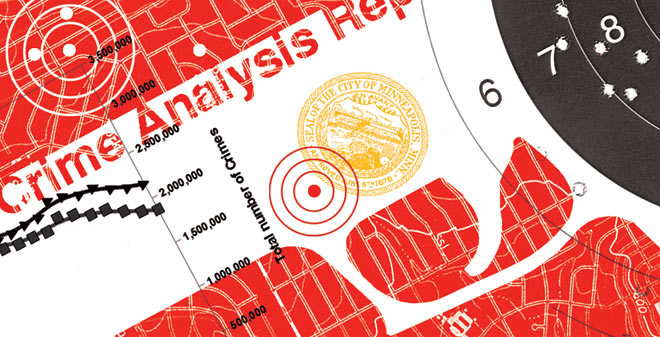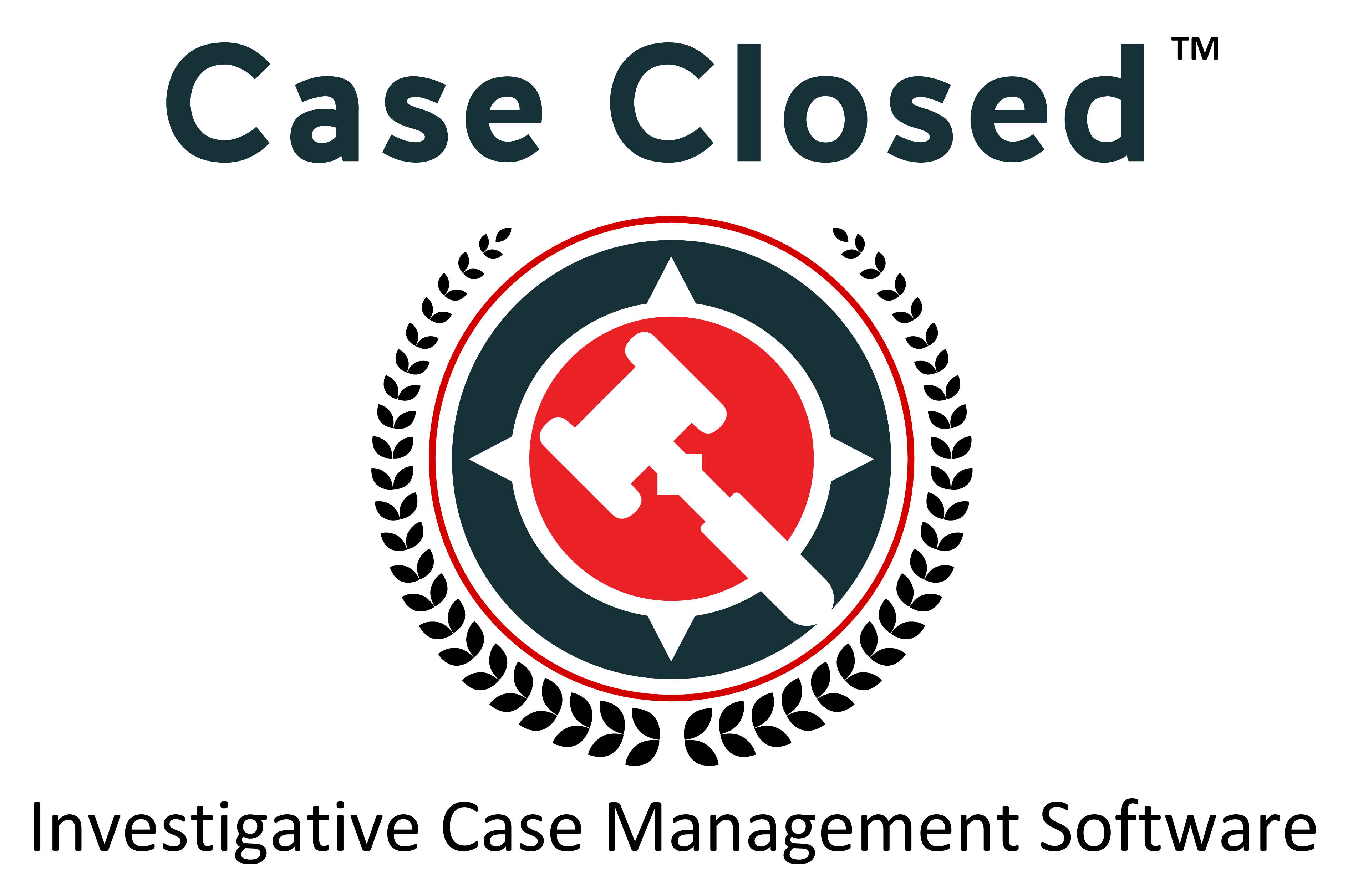 The International Association of Crime Analysts (IACA) 2016 conference is in full swing in Louisville, KY. Here is some good, local video coverage of the event…
The International Association of Crime Analysts (IACA) 2016 conference is in full swing in Louisville, KY. Here is some good, local video coverage of the event…
http://www.wave3.com/story/33150410/hundreds-of-crime-prevention-experts-converge-on-louisville
All posts by Crime Tech Solutions (www.crimetechsolutions.com)
Law Enforcement: Got Big Data… Now What?
Great article from PoliceMag.com, originally posted HERE.
 Since its introduction nearly a decade ago, big data in the form of analytics has helped police agencies all over the world enhance decision making, improve strategies to combat crime, and ultimately solve—and prevent—more crimes. But while the benefits of mining and critically analyzing huge amounts of data are being realized in other developed countries from the United Kingdom to Canada to New Zealand, U.S. law enforcement agencies have generally been slower to jump on the bandwagon.
Since its introduction nearly a decade ago, big data in the form of analytics has helped police agencies all over the world enhance decision making, improve strategies to combat crime, and ultimately solve—and prevent—more crimes. But while the benefits of mining and critically analyzing huge amounts of data are being realized in other developed countries from the United Kingdom to Canada to New Zealand, U.S. law enforcement agencies have generally been slower to jump on the bandwagon.
The reasons for slower adoption of big data tools in the United States are as varied as the nearly 18,000 state and local law enforcement agencies around the country. For many, the decision to buy or not to buy advanced crime analytics software often comes down to the usual culprit: lack of money. With few exceptions, police agencies across the country are faced with the prospect of doing more with less. And with increased pressure on local departments to put more feet on the street, do more in terms of community policing, and divert funding to equip all officers with body cams, it’s often hard for departments to make big data solutions a top priority.
Money, however, is not the only issue slowing analytics adoption in the U.S. Unlike countries such as the U.K., the American law enforcement community is decentralized. It does not have a single system of data, standards, and operations. Rather, police departments here pride themselves on their individuality and independence. Walk into a meeting where 10 different departments are represented and you will likely see 10 different colors of uniforms.
The same holds true when it comes to information sharing. While it is often assumed that police departments all work in close cooperation with each other, the reality may be quite different.
 None of this is news, nor is it a criticism of U.S. police departments. It simply reflects Americans’ independent nature and the way in which law enforcement in this country is structured. It’s the thing that makes us great but, in the case of analytics, it’s also a major factor slowing analytics adoption.
None of this is news, nor is it a criticism of U.S. police departments. It simply reflects Americans’ independent nature and the way in which law enforcement in this country is structured. It’s the thing that makes us great but, in the case of analytics, it’s also a major factor slowing analytics adoption.
Big data adoption is also hampered by the sheer size of the U.S. Sure, from a pure geographic standpoint, the U.S. and Canada are similar in size. But most of Canada’s people live in Ontario or on the West Coast, near Vancouver. There are just over 200 police departments in all of Canada. Compare that to the U.S., where there are huge differences in the make-up of the population, not to mention lifestyle, attitudes, and so much more between, say, the Southwest and the Northeast.
Law enforcement policy-makers on the East Coast don’t know what to make of their counterparts on the West Coast and vice versa. Similarly, the day-to-day needs and demands placed on a police chief in Kansas City can’t help but be very different from those of his or her peers in Chicago, Los Angeles, Seattle, or Philadelphia.
 All of these factors have contributed to slowing the adoption of analytics by U.S. police agencies. They are also complicated by perhaps the most intangible impediment: fear of technology. Whether they like to admit it or not, some law enforcement leaders are more comfortable taking an “old school” approach to police work. They prefer business as usual, which means feet on the street and files stacked on their detectives’ desks, not sleek, state-of-the-art technology.
All of these factors have contributed to slowing the adoption of analytics by U.S. police agencies. They are also complicated by perhaps the most intangible impediment: fear of technology. Whether they like to admit it or not, some law enforcement leaders are more comfortable taking an “old school” approach to police work. They prefer business as usual, which means feet on the street and files stacked on their detectives’ desks, not sleek, state-of-the-art technology.
Change is never easy, especially when tried-and-true policing methods have proven to be effective. Decentralization also plays a part here – it’s easier to take technology risks when it’s mandated from above and much harder for the nearly 18,000 law enforcement chiefs in the U.S. to each take a step into the unknown. Nevertheless, change is coming, spurred in large part by the fact that the cost of advanced crime analytics is coming down.
Also easing the impact of costs to local agencies will be the dollars for big data solutions coming from the federal government. Those funds come with a catch, however, that gets at another obstacle. A significant portion of federal funds in the future will be earmarked for supporting regional initiatives. That means to be eligible for federal funds, many departments will have no choice but to work with their colleagues across jurisdictional boundaries. And while that may bring some initial resistance, regional cooperation will inevitably help to promote not just data sharing, but overall effectiveness.
 The public is also demanding increased police effectiveness and efficiency. Responding to that pressure, police chiefs are recognizing that big data solutions can have a huge impact on reducing the number of man-hours it takes to sift through mountains of data in order to solve crimes. This is particularly important as law enforcement finds itself confronting not only the standard array of home break-ins, car thefts, and the like, but also the threat of “lone wolf” terrorist attacks, cybercrime, and highly sophisticated international trafficking rings.
The public is also demanding increased police effectiveness and efficiency. Responding to that pressure, police chiefs are recognizing that big data solutions can have a huge impact on reducing the number of man-hours it takes to sift through mountains of data in order to solve crimes. This is particularly important as law enforcement finds itself confronting not only the standard array of home break-ins, car thefts, and the like, but also the threat of “lone wolf” terrorist attacks, cybercrime, and highly sophisticated international trafficking rings.
Fortunately, as analytics software has become more affordable, it has also become easier to use. No longer the exclusive domain of the IT department, newer big data solutions are now designed to be used by front line analysts and investigators, with just one or two days of training and without the need for sophisticated oversight.
This has dramatically changed the role of law enforcement analysts. Formerly the department statistician, today’s analyst has become a critically important member of the crime fighting team, capable of rapidly moving from tactical analysis to the focal point of providing intelligence on high-profile crimes and strategic crime-fighting initiatives.
Ease of use also comes into play as a new generation of officers, many of whom were raised on Google and Xbox, begin to take on leadership roles in their departments. These individuals are used to having the latest technology at their immediate disposal. They will readily see that a big data solution can not only play a critical role in more effective policing, but also pay for itself in savings of both time and money.
 The growing use of cloud computing plays a role in this equation. Storing data in the cloud is becoming accepted as safe and secure, bringing with it economic advantages and removing the need for departments to provide highly specialized IT staff and infrastructure previously required to support analytical solutions.
The growing use of cloud computing plays a role in this equation. Storing data in the cloud is becoming accepted as safe and secure, bringing with it economic advantages and removing the need for departments to provide highly specialized IT staff and infrastructure previously required to support analytical solutions.
All of these factors are combining to change the face of effective policing in the U.S. That will mean significantly greater acceptance of analytics to mine everything from social media files, emails, text messages, and the content of police RMS systems to phone records, license plate reader data, and ballistics data. Efficiencies of scale will dictate greater cooperation among departments, resulting in increased efficiency and more effective policing. Being able to quickly search and find critical information in data that police agencies already have in hand will undoubtedly improve decision making and officer safety, while helping to solve cases more quickly.
 Crime Tech Solutions, who earlier this year acquired TN based Case Closed Software, delivers unique value to customers with comprehensive investigative case management software, sophisticated link analysis tools, criminal intelligence management software, and crime mapping technology that includes some of the industry’s best analytics and reporting capabilities.
Crime Tech Solutions, who earlier this year acquired TN based Case Closed Software, delivers unique value to customers with comprehensive investigative case management software, sophisticated link analysis tools, criminal intelligence management software, and crime mapping technology that includes some of the industry’s best analytics and reporting capabilities.
Overland Park senior crime analyst Jamie May joins Crime Tech Solutions
September 16, 2016 – (Leander, TX) Crime Tech Solutions, a fast-growing provider of low cost / high performance crime fighting software and analytics is delighted to announce the addition of Jamie May as senior analyst and strategic advisor to the company.
 Ms. May has spent over 17 years as a crime and intelligence analyst for Overland Park Police Department in Kansas, and is a recognized expert in crime analysis, mapping, and criminal intelligence. She has sat on critical crime analysis committees including the International Association of Crime Analysts’ Ethics Committee (IACA) and is a past Vice President / Secretary at Mid American Regional Crime Analyst Network (MARCAN).
Ms. May has spent over 17 years as a crime and intelligence analyst for Overland Park Police Department in Kansas, and is a recognized expert in crime analysis, mapping, and criminal intelligence. She has sat on critical crime analysis committees including the International Association of Crime Analysts’ Ethics Committee (IACA) and is a past Vice President / Secretary at Mid American Regional Crime Analyst Network (MARCAN).
“Jamie brings an incredible amount of user experience and innovation to the company”, said Kevin Konczal, Crime Tech Solutions’ VP of Sales. “She’s been active in this community for years, and co-authored the ground-breaking guide, GIS in Law Enforcement: Implementation Issues and Case Studies.”
“To me, Crime Tech Solutions represents a truly innovative company that understands how to develop and market very good technology at prices that most agencies can actually afford”, said Ms. May. “I’m looking forward to being part of the continued growth here.”
In her role with the company, Ms. May will interact with customers and prospects to help align the company’s solution strategy with market and user requirements.
 Crime Tech Solutions, who earlier this year acquired TN based Case Closed Software, delivers unique value to customers with comprehensive investigative case management software, sophisticated link analysis tools, criminal intelligence management software, and crime mapping technology that includes some of the industry’s best analytics and reporting capabilities.
Crime Tech Solutions, who earlier this year acquired TN based Case Closed Software, delivers unique value to customers with comprehensive investigative case management software, sophisticated link analysis tools, criminal intelligence management software, and crime mapping technology that includes some of the industry’s best analytics and reporting capabilities.
Using crime analysis solutions to take a ‘Byte’ out of crime
 Posted by Crime Tech Solutions
Posted by Crime Tech Solutions
Law enforcement agencies everywhere are tasked with reducing and investigating crime with fewer and fewer resources at their disposal. “To protect and serve” is the highest responsibilities one can sign up for, particularly in light of recent well-publicized criticisms of police by activists in every city.
That responsibility weighs even heavier in a world with no shortage of criminals and terrorists. There’s never enough money in the budget to adequately deal with all of the issues that face an individual agency on a daily basis. Never enough feet on the street, as they say.
New Tools for Age-Old Problems
Perhaps that’s why agencies everywhere are moving to fight crime with an evolving 21st century weapon – law enforcement software including investigative case management, link and social network analysis, and, importantly, crime analytics with geospatial and temporal mapping.

Crime analytics and investigation software have proven themselves to be valuable tools in thwarting criminal activity by helping to better define resource allocation, target investigations more accurately, and enhancing public safety,
According to some reports, law enforcement budgets have been reduced by over 80% since the early 2000s. Still, agencies are asked to do more and more, with less and less.
Analytics in Policing

Analytics in law enforcement play a key role in helping law enforcement agencies better forecast what types of crimes are most likely to occur in a certain area within a certain window of time. While no predictive analytics solution offers the clarity of a crystal ball, they can be effective in affecting crime reduction and public safety.
Predictive analysis, in essence, is taking data from disparate sources, analyzing them and then using the results to anticipate, prevent and respond more effectively to future crime. Those disparate data sources typically include historical crime data from records management systems, calls for service/dispatch information, tip lines, confidential informant information, and specialized criminal intelligence data.
The Five W’s of Predictive Analytics
Within this disparate data lie the 5 W’s of information that can be used by crime analysis software to build predictions. Those key pieces include:
- Arrest records – who committed crimes
- Geospatial data – where crimes have occurred
- Temporal data – when crimes have occurred
- Statistical data – what crimes have occurred
- Investigation data – why (and how) the crimes occurred

Using the 5 W’s, agencies are able to gain insight and make predictions about likely future criminal behavior. For example, if a certain type of crime (what) tends to occur in ‘this’ area (where) at ‘this’ time (when), and by ‘this’ type of individual (who) for ‘this’ reason (why)… it would be wise to deploy resources in that area at that time in order to prevent the incidents from ever occurring. This, of course, is a dramatic over-simplification of the types of analytics that make up predictive policing, but illustrates the general concept well.
Although criminals will always try to be one step ahead of the law, agencies deploying predictive analytics are able to maximize the effectiveness of its staff and other resources, increasing public safety, and keeping bad guys off the street.
More about Crime Tech Solutions
Crime Tech Solutions is an Austin, TX based provider of crime and fraud analytics software for commercial and law enforcement groups. Our offerings include sophisticated Case Closed™ investigative case management and major case management, GangBuster™ gang intelligence software, powerful link analysis software, evidence management, mobile applications for law enforcement, comprehensive crime analytics with mapping and temporal reporting, and 28 CFR Part 23 compliant criminal intelligence database management systems.
Crime Tech Solutions’ continued growth fuels management team expansion
September 13, 2016 – (Leander, TX) Crime Tech Solutions, a fast-growing provider of low cost crime fighting software and analytics today announced the appointment of Kevin Konczal as Vice President of Sales. The company created the position in response to rapid growth in market share for crime analysis and investigative case management software.
 Mr. Konczal is a seasoned start-up and marketing expert with over 30 years of diversified business management, marketing and start-up experience in information technology and consumer goods. Additionally, Konczal has over two decades of Public Safety service as a police officer, Deputy Sheriff and Special Agent.
Mr. Konczal is a seasoned start-up and marketing expert with over 30 years of diversified business management, marketing and start-up experience in information technology and consumer goods. Additionally, Konczal has over two decades of Public Safety service as a police officer, Deputy Sheriff and Special Agent.
Most recently, he held the position as a Regional Sales Manager for TriTech Software Systems, a leading provider of public safety software.
“Kevin is a seasoned executive with a combination of public service and information technology expertise”, said Crime Tech Solutions’ chief technology officer Keith Weigand. “The management team is looking forward to adding his leadership within the sales organization.”
In addition to his executive career, Konczal serves on several advisory boards, commissions and boards of directors. He attended Oakland College studying Criminal Justice and completed the Dallas Police Academy. Notably, he was awarded the Police Commendation Award for saving the lives of fellow officers in a deadly force c onfrontation.
onfrontation.
“The exciting thing about Crime Tech Solutions”, added Konczal “is their clear position as a fast-growing company dedicated to low price and high performance software for law enforcement.”
“I’m looking forward to working with a company that delivers true value to customers with comprehensive investigative case management software, sophisticated link analysis tools, criminal intelligence management software, and crime mapping technology that includes what I think are the industry’s best analytics and reporting capabilities”, he added.
Earlier this year, Crime Tech Solutions acquired Tennessee based Case Closed Software (www.caseclosedsoftware.com).
About Crime Tech Solutions
Crime Tech Solutions (www.crimetechsolutions.com) is a fast-growing U.S. based provider of low cost / high performance investigation software and crime analytics. The company proudly supports the International Association of Crime Analysts (www.iaca.net), International Association of Chiefs of Police (www.iacp.org), the National Sheriff’s Association (www.sheriffs.org), and the association of Law Enforcement Intelligence Units (www.leiu.org).
The company’s products include Case Closed investigative case management software, link and social network analytics, 28 CFR Part 23 compliant criminal intelligence management software, enterprise search for law enforcement, and crime analytics with mapping, reporting, and predictive policing.
Data continues to influence policing
Great article by Megan Favignano at New Press Now. Original article at http://www.newspressnow.com/news/local_news/data-continues-to-influence-policing/article_ef968ba2-389c-5289-b341-a9818ae231d7.html
A copy of the article follows:
 A recent report questions how some police departments are using data to forecast future crimes.
A recent report questions how some police departments are using data to forecast future crimes.
The report examined how departments are utilizing predictive policing, a computer software that uses data to forecast where crime may happen, who may commit it and who could be potential victims.
Upturn, an analysis organization out of Washington, D.C., that works with a variety of groups, published the report “Stuck in a Pattern” last month. “Predictive policing,” the report states, is a marketing term popularized by vendors who sell the software.
 How police departments nationwide utilize crime statistics and the software available to patrol officers monitoring incidents has evolved a lot in the past couple decades, Sgt. Tracy Barton with the St. Joseph Police Department said. Barton started as a patrol officer 20 years ago. He said having software like police have today would have been useful.
How police departments nationwide utilize crime statistics and the software available to patrol officers monitoring incidents has evolved a lot in the past couple decades, Sgt. Tracy Barton with the St. Joseph Police Department said. Barton started as a patrol officer 20 years ago. He said having software like police have today would have been useful.
In the past, crime analysts used physical maps and mathematical algorithms to do what software does instantly today. Barton, the St. Joseph Police Department’s crime analyst, uses software that takes into account crimes reported to police to show crime hot spots in the city. A map of those hot spots is available online. Officers, he said, have access to a more in-depth version of that hot spots map, which includes extra details about the area and the crimes occurring.
The hot spots approach St. Joseph police use is most helpful in preventing crime when a series of crimes occur or when there is a crime pattern in a given area, he said. St. Joseph’s small size, Barton added, poses an extra challenge.

The St. Joseph Police Department has had its current software for just a few years. It doesn’t fit the definition of the predictive policing software Upturn outlines in the recent report. The software used locally depends on crime reports police receive. Predictive policing also looks at what types of business are located in an area, if repeat offenders live nearby and other information to predict where crimes may occur. Typically, according to the recent report, predictive policing takes one of two approaches, focusing either on place-based data or person-based data to make predictions.
Kevin Bryant, sociology and criminology professor at Benedictine College, said when people hear predictive policing described, they often think of the movie “Minority Report.” The software, he said, is nothing like in the movies.
“Predictive policing now has kind of morphed into better proactive methods that are based on prediction to some extent in forecasting risk,” Bryant said of how data-driven policing has changed over time. “But what we’ve learned through evaluation studies is that it’s really more important what the police do when they’re in a crime hot spot.”
 ryant worked with the Shawnee, Kansas, Police Department on research that looked at what he calls “smart policing.” In his research and in other work he has read, Bryant said it’s important for police to have a high visibility in crime hot spots, for officers to make connections with the public and for them to avoid staying in crime hot spots for extended periods of time.
ryant worked with the Shawnee, Kansas, Police Department on research that looked at what he calls “smart policing.” In his research and in other work he has read, Bryant said it’s important for police to have a high visibility in crime hot spots, for officers to make connections with the public and for them to avoid staying in crime hot spots for extended periods of time.When police are in a hot spot for too long, public surveys show area residents feel like they are being picked on rather than protected, he said. Predictive policing takes into account businesses in a given area. Bryant said some types of facilities are at a higher risk of victimization and others can attract crime to an area.
“Knowing where bars, taverns, restaurants, gas stations, convenience stores are, we can actually use their locations as a means of forecasting where crime might emerge at a later date,” Bryant said. “Part of predictive policing is predicting who the risky offenders are and that can be controversial.”
Upturn’s report also explored an ongoing debate among criminologists on the impact of using crime reports when determining patrol.
“Criminologists have long emphasized that crime reports and other statistics gathered by the police are not an accurate record of the crime that happens in a community,” the report states.

Civil Rights and Tech Advocates Sound Alarm on Racial Bias in "Predictive Policing"
From the newswire: http://www.commondreams.org/newswire/2016/08/31/civil-rights-and-tech-advocates-sound-alarm-racial-bias-predictive-policing
 WASHINGTON – Today a broad coalition of civil rights, privacy, and technology organizations issued a sweeping rebuke to the use and misuse of predictive policing products by police departments as the technology and policy firm Upturn released a report on the topic.
WASHINGTON – Today a broad coalition of civil rights, privacy, and technology organizations issued a sweeping rebuke to the use and misuse of predictive policing products by police departments as the technology and policy firm Upturn released a report on the topic.The 17 organizations signed a shared statement of civil rights concerns about the systemic flaws, inherent bias, and lack of transparency endemic to predictive policing products and their vendors. The groups point out how these products exacerbate deep dysfunction and disproportionate policing practices that are “systemically biased against communities of color and allow unconscionable abuses of police power.”
Signers of the statement include The Leadership Conference on Civil and Human Rights, 18 Million Rising, American Civil Liberties Union, Brennan Center for Justice, Center for Democracy & Technology, Center for Media Justice, Color of Change, Data & Society Research Institute, Demand Progress, Electronic Frontier Foundation, Free Press, Media Mobilizing Project, NAACP, National Hispanic Media Coalition, Open MIC (Open Media and Information Companies Initiative), Open Technology Institute at New America, and Public Knowledge.
A new report entitled “Stuck in a Pattern” from the technology and policy firm Upturn — released with today’s statement — finds “a trend of rapid, poorly informed adoption” of predictive policing, with “pervasive, fundamental gaps in what’s publicly known” about how these systems work.
Predictive policing products are marketed with names like “Beware,” “Hunchlab,” and “PredPol.” Police nationwide have begun using them to predict who might commit crimes, or where crimes might be committed, and to target policing to those people and places. However, as the groups state, “The data driving predictive enforcement activities … is profoundly limited and biased. … As a result, current systems reinforce bias and sanitize injustice.”
Among six key concerns in the statement, the groups condemn departments for not disclosing or seeking public input on the use of these products, and the vendors for “shrouding their products in secrecy, and even seeking gag clauses or asking departments to pledge to spend officer time resisting relevant public records requests.”
The statement also notes promising uses of data in policing, pointing out that, “Even within a broken criminal justice system, there are places where data can be a force for good: For example, data can identify people with mental illness for treatment rather than punishment, or provide early warning of harmful patterns of officer behavior. However, today, most ‘predictive policing’ is not used for such constructive interventions.”
“These technologies threaten the Constitution’s promises of equal protection under the law and due process, and its protections against unreasonable searches and seizures,” said Wade Henderson, president and CEO of The Leadership Conference on Civil and Human Rights. “This is fortune-teller policing that uses deeply flawed and biased data and relies on vendors that shroud their products in secrecy. Instead of using predictive technology to correct dysfunctional law enforcement, departments are using these tools to supercharge discrimination and exacerbate the worst problems in our criminal justice system.”
To request an interview with an expert on the use of these products or a signer of the statement, email Simpson@civilrights.org.
The Leadership Conference is a 501(c)(4) organization that engages in legislative advocacy. It was founded in 1950 and has coordinated national lobbying efforts on behalf of every major civil rights law since 1957.
Reprinted by crime technology provider, www.crimetechsolutions.com
Investigating Investigation Software? Case Closed!
WBISoft has a flattering article HERE for the folks at www.caseclosedsoftware.com

Predictive Policing – Racist???
Article at http://beta.deseretnews.com/article/865660571/Can-the-algorithm-police-use-to-predict-crimes-be-racist.html
Taking a 'Byte' out of Crime
Nice coverage from FL-Tek… http://www.fl-tek.com/taking-a-byte-out-of-crime/